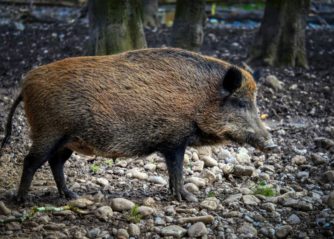Den vita hamstern: en fascinerande varelse

Introduktion: Next time you’re thinking about getting a pet, have you considered a white hamster? These little creatures may seem cute and fluffy, but there is much more to them than meets the eye. In this article, we will take a deep dive into the world of white hamsters, exploring their overview, types, popularity, quantitative measurements, differences between various breeds, and a historical analysis of their pros and cons.
Övergripande, grundlig översikt över den vita hamstern
The white hamster, also known as the albino hamster, is a color variation of the Syrian hamster (Mesocricetus auratus). This coloration is the result of a genetic mutation that causes a lack of pigmentation, resulting in a white fur coat and red or pink eyes. While albino hamsters can occur in different breeds, the Syrian hamster is the most common type.
Albino hamsters have a lifespan of approximately two to three years, making them relatively short-lived pets. They are known for their docile and friendly temperament, making them suitable for families or individuals looking for a low-maintenance and affectionate pet. These hamsters are also nocturnal creatures, meaning they are most active during the night.
Omfattande presentation av den vita hamstern

There are several types of white hamsters, including the Winter White Dwarf Hamster, Roborovski Dwarf Hamster, and Campbell’s Dwarf Hamster. Each type has its unique characteristics and traits.
1. Winter White Dwarf Hamster:
– This type of white hamster, also known as the Siberian hamster, hails from the cold regions of Siberia.
– They have the ability to change their fur coats during wintertime, turning completely white to blend in with the snowy landscape.
– Winter White Dwarf Hamsters are known for their active nature and curiosity.
2. Roborovski Dwarf Hamster:
– One of the smallest hamster breeds, the Roborovski Dwarf Hamster, also called the Robo hamster, originates from the deserts of Mongolia.
– They have a distinctive appearance with a short and stocky body, short tail, and a sandy white fur coat.
– Roborovski Dwarf Hamsters are incredibly fast and active, requiring spacious enclosures to satisfy their energetic nature.
3. Campbell’s Dwarf Hamster:
– Another type of dwarf hamster, Campbell’s Dwarf Hamster, is native to the steppes and deserts of Asia.
– They come in various colors, including the white variation.
– Campbell’s Dwarf Hamsters are known for their social nature, making them great companions for owners willing to interact and play with them.
Kvantitativa mätningar om den vita hamstern
When it comes to quantitative measurements about white hamsters, there are several fascinating aspects to consider.
1. Size:
– White hamsters, like their non-albino counterparts, are relatively small creatures, measuring around 4 to 7 inches in length (including their tail).
– This compact size makes them suitable for individuals residing in apartments or anyone seeking a pet that doesn’t require excessive space.
2. Weight:
– On average, white hamsters weigh between 100 to 150 grams.
– However, it’s essential to monitor their weight regularly, as sudden weight loss or gain can indicate underlying health issues.
3. Lifespan:
– As mentioned earlier, white hamsters have a lifespan of around two to three years.
– Providing them with a balanced diet, suitable living conditions, and regular vet check-ups can help maximize their lifespan.
Skillnader mellan olika vita hamstrar
While white hamsters share the common characteristic of having a white fur coat and pink or red eyes, there are variations within each breed that set them apart.
1. Coat texture and lengt
– Some white hamsters have a short, dense fur coat, while others may have longer fur.
– This difference in fur texture can result in variations in grooming needs and appearance.
2. Personality traits:
– Although white hamsters are generally known for their friendly and docile nature, individual hamsters within each breed may display unique personality traits.
– Some may be more outgoing and adventurous, while others may be more timid and shy.
– Understanding these differences can help potential owners choose the best-suited white hamster for their personality and lifestyle.
En historisk genomgång av för- och nackdelar med olika vita hamstrar
Throughout history, different white hamster breeds have gained popularity for various reasons. Here’s a brief overview of their advantages and disadvantages:
1. Syrian White Hamsters:
– Advantages:
– Easy to handle and tame.
– Suitable for families with children.
– Disadvantages:
– Larger size requires more space.
– Shorter lifespan compared to dwarf hamster breeds.
2. Winter White Dwarf Hamsters:
– Advantages:
– Ability to change their fur color is a unique and fascinating trait.
– Active and playful nature.
– Disadvantages:
– Can be more challenging to handle due to their small size and speed.
– Require larger enclosures to satisfy their need for exercise.
3. Roborovski Dwarf Hamsters:
– Advantages:
– Extremely active and entertaining to watch.
– Do not have odor issues like some other hamster breeds.
– Disadvantages:
– Their small size can make handling more difficult.
– May not be suitable for young children due to their fast movements.
4. Campbell’s Dwarf Hamsters:
– Advantages:
– Sociable and enjoy human interaction.
– Available in various colors, including the white variation.
– Disadvantages:
– Require regular socialization to prevent boredom or loneliness.
– Can be prone to diabetes if not provided with a balanced diet.
Conclusion: Despite their small size, white hamsters have captured the hearts of many pet owners around the world. Their unique genetic mutation, combined with their friendly nature, makes them an appealing choice for both individuals and families. Whether you opt for a Syrian White Hamster, Winter White Dwarf Hamster, Roborovski Dwarf Hamster, or Campbell’s Dwarf Hamster, each breed has its own charm and characteristics to offer. So why not consider a white hamster as your next furry companion?
















































